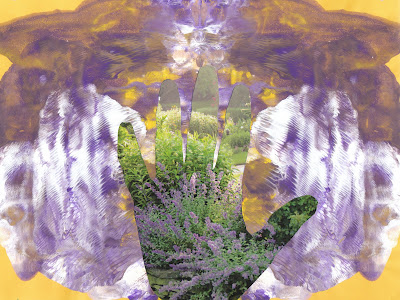Art therapy aids young tsunami victims
Group helps children regain some control in their lives
The Associated Press
updated 12:46 p.m. ET, Mon., June 6, 2005
 Dr. Jennifer Baggerly, seen during a play therapy session with children in Colombo, Sri Lanka, is part of the Association for Play Therapy team.
Dr. Jennifer Baggerly, seen during a play therapy session with children in Colombo, Sri Lanka, is part of the Association for Play Therapy team. Dr. Jennifer Baggerly via AP
TAMPA, Fla. - One child’s drawing shows a swirling sea that has engulfed houses, trees and people, their arms outstretched in a final attempt to save themselves from a deadly tsunami.
Another child paints a darker scene in watercolors — muddy swirling waves and hauntingly detailed faces of drowning victims.
The images, even though disturbing, were therapeutic for the children who watched their families and neighbors being swept away during the Dec. 26 Asian disaster.
“The images get stacked up in the children’s mind if they don’t get the support to express it,” said Jennifer Baggerly, a professor who specializes in play therapy for traumatized children.
Baggerly, 42, has coaxed fear and anxiety out of the littlest victims of natural and manmade disasters. And, she recently used art to help comfort young tsunami victims.
'Toys are medicine'
Earlier this year, the University of South Florida professor joined a team of therapists sent to Sri Lanka by Operation USA, a Los Angeles-based international aid organization.
The group traveled to Trincomale, visiting an orphanage and refugee camps for minority Hindu Tamils who have been forced from their homes in a long-running civil war. The orphanage was located near a beach, still scattered with shoes and clothes from tsunami victims.
“You see women’s saris on the beach. It was a constant reminder of the tragedy,” Baggerly said.
Besides therapists, the organization has sent several shipments of toys and art supplies to Sri Lanka and other countries hit by the tsunami. In a disaster of such magnitude, officials said, it is easy to overlook children’s unique needs.
“We just basically say that toys are medicine for children, period,” Operation USA President Richard Walden said. “Whether it’s a giant box of a thousand Frisbees or a couple of hundred tennis balls. You show up in some of these places and they have nothing to play with.”
Some studies have indicated that a child’s developing brain can suffer permanent damage if anxiety goes untreated. While the research into childhood trauma is complicated, therapy is not. Children only need to play and learn new ways to communicate their fears, Baggerly said.
While in Sri Lanka, she taught the young victims yoga techniques to deepen their breathing and calm their nerves, and a “butterfly hug,” where children cross their arms in front of their chest and tap their fingers. The movement engages both sides of the brain and can snap a child consumed with a disturbing past back into the present, she said.
More importantly, the team of therapists taught the children to play again — the start of bringing the children out of their shells.
“They were afraid mainly of playing outside because they thought another tsunami was coming,” Baggerly said.
Baggerly and other volunteers also put on a puppet show and told a story about animals that had something bad happen to them. Working through translators, they addressed the children’s fears.
The group explained it had been an earthquake which had caused the giant wave. Many of the youngsters had believed they were responsible for the tsunami or that they were being punished by a higher power.
“They were saying, ’Did the tsunami come because I had bad thoughts?”’ Baggerly said.
Regaining control
Baggerly, 42, has been working with traumatized children for more than a decade, focusing on those who lived in homeless shelters. After the Sept. 11, 2001, attacks, she turned to helping children who had survived catastrophes and training emergency workers in dealing with young disaster victims.
In Florida, Baggerly helped young hurricane victims cope with the devastating aftermath of last year’s storms. Traveling to areas hit hard by Hurricane Charley, Baggerly worked with children at an emergency aid center.
The only entertainment was a television set up in a corner with some folding chairs in front of it. The youngsters had no toys, no organized activities and plenty of nervous energy, fear and anxiety.
Baggerly brought art supplies for the children to create signs and drawings designating the corner of the center as their personal space. The activity allowed them to regain some control when their world had been turned topsy-turvy, she explained.
For children on both sides of the world, she said, the best way to cope can be found in the trappings of childhood — a crayon, a piece of paper, a puppet show.
“The procedures you use for trauma after a hurricane are similar to the ones you use after a war,” Baggerly said. “You try to help them be optimistic and focus in the here and now.”









